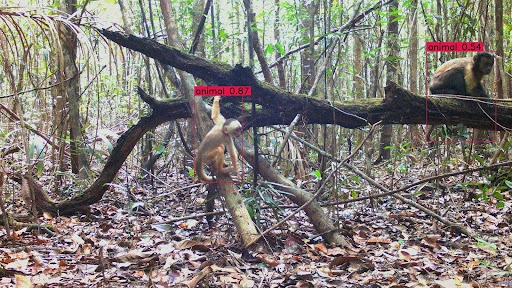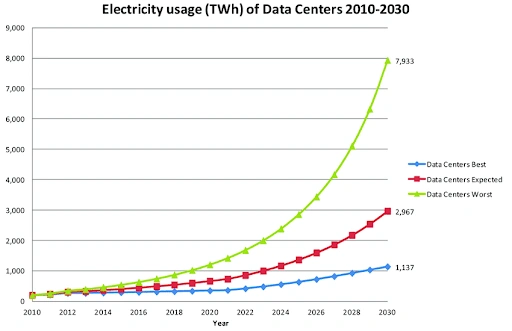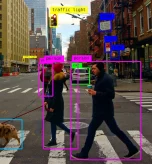Generative AI, once a glint in the eye of researchers pre-2022, has advanced rapidly in a short space of time.
While generative AI technology has already dramatically impacted business and society in its short two-year history, questions surround its future.
Will AI develop a deeper understanding of our world? How will the boundaries between human and AI-created content shift? And how will we navigate the ethical and societal challenges AI advancements pose?
These questions aren’t just abstract – they have real implications for industries, creative work, and our social fabric as AI becomes more deeply embedded in daily life. Understanding how we tackle these challenges will shape AI’s role in our collective future.
Read on to explore generative AI’s key milestones and projections for the years ahead, from confronting ethical questions to developing cutting-edge neuromorphic hardware and more.
Language Models: Faster, Stronger, Multimodal
We’ve witnessed massive progress in the development of large language models (LLM) – the key technology associated with generative AI.
This has culminated in Anthropic’s Claude 3.5 Sonnet, Gemini Ultra, and OpenAI’s GPT-4o with its Advanced Voice Mode (AVM), which is bringing us closer to natural conversations with AI.
LLM progress has been driven by techniques like large-scale unsupervised pre-training, fine-tuning on diverse datasets, and retrieval augmented generation (RAG), which involves incorporating knowledge from external sources.
While optimised to work primarily with text, today’s leading frontier models can seamlessly interact with multiple media types, including images, files like spreadsheets and PDFs, and even audio and video.
Looking ahead to 2025 and beyond, we can expect a continuation of this multi-modal trend in AI:
- Multimodal AI Integration: Future models will seamlessly integrate and process information from text, images, speech, and video. This will build on developments like OpenAI’s AVM, which can process and respond to speech with remarkably low latency.
- RAG Advancements: RAG techniques will become more sophisticated, enabling AI models to access and utilise vast amounts of real-time information, enhancing their ability to provide up-to-date and contextually relevant responses.
- Open-Source Challengers: We’ll likely see more open-source models from organisations like Mistral and Hugging Face competing with major closed-source models from OpenAI, Anthropic, and Google. The continued democratisation of AI technology will make it easier for businesses and organisations to build sovereign AI products.
- Specialised and Low-Resource Models: Language models will become more capable at lower parameter counts – ideal for specialised applications. AI models will be tailored for specific industries and optimised to serve diverse global communities more effectively.
Ethical AI and Responsible Development
Generative AI is causing ethical and legal disruption on three primary frontiers: bias and discrimination, privacy, and copyright. 2024 was the year of the AI lawsuit, with prestigious organisations such as the New York Times filing legal complaints against OpenAI.
We’ve also seen how AI systems still fail certain demographics. Research in AI bias extends back to the Gender Shades study in 2018, which exposed bias in image recognition systems, finding error rates up to 34% higher for darker-skinned women compared to lighter-skinned men.
Recent studies reveal that insidious forms of AI bias are persisting, and the stakes are higher than ever as AI systems are increasingly integrated into critical areas like healthcare, legal, and welfare services.
Combating AI bias and ethics is an ongoing challenge for 2025:
- AI Alignment: There will be an ongoing and intense focus on AI alignment – ensuring that systems align with human values and societal norms. Techniques like Reinforcement Learning from Human Feedback (RLHF) are central to this goal, allowing AI models to learn from iterative feedback provided by humans.
- Regulatory Frameworks: Expect the ongoing development of robust ethical guidelines and regulations governing the deployment of generative AI. The EU AI Act is set to roll-out throughout 2025.
- Bias Mitigation: There will be increased efforts to address and mitigate biases in AI systems that can perpetuate or exacerbate societal inequalities. This will include a growing emphasis on making AI decision-making processes more transparent and explainable to build public trust.
Deploying AI Across Specialised Domains
Generative AI applications are fast expanding into virtually every corner of scientific research, including healthcare, agriculture, robotics, climatology, geography and mapping, and conservation, to name but a few examples.
For example, in medicine, AI is accelerating drug development by analysing vast chemical libraries and biological data to identify promising candidates. Researchers at MIT used deep learning to discover the first new class of antibiotics in decades.
AI systems in agriculture optimise crop yields and reduce waste with real-time insights into crop health and soil conditions. Climate scientists leverage AI for more accurate climate change models, informing mitigation strategies. In conservation, projects like Guacamaya in the Colombian Amazon use AI to analyse satellite imagery and bioacoustic data, monitoring deforestation and biodiversity.

Generative AI’s broad expansion into diverse domains will continue in 2025 and the future:
- Healthcare and Drug Discovery: AI models will play an increasingly crucial role in clinical decision-making, enabling earlier and more accurate disease diagnosis and personalised treatment plans. In drug discovery, AI will accelerate the process of identifying and developing new medicines.
- Climate Modeling and Environmental Monitoring: Advanced AI systems will provide more accurate and timely insights into climate change impacts, informing strategies for mitigation and adaptation.
- Scientific Research: From materials science to astrophysics, AI will enhance scientific research by analysing vast amounts of data, identifying patterns, and generating novel ideas.
- Energy Optimisation: AI will enhance energy usage, optimise renewable energy integration, and improve overall grid efficiency.
- Space Exploration: AI will accelerate the analysis of astronomical data, enable autonomous space missions, and assist in the search for extra-terrestrial life.
Progress in AI Infrastructure and Compute
Generative AI’s exponential growth is consuming a volume of energy that already rivals the consumption of small nations.
The International Energy Agency (IEA) recently highlighted the growing footprint of data centres, which already consumed more than 1.3% of the world’s electricity in 2022, a figure that is expected to triple over 10 years.
This energy demand challenges the AI industry’s growth. To sustain progress, the field must develop more efficient hardware, innovative cooling systems, and increase its use of renewable energy sources.

Looking towards 2025 and beyond:
- Quantum Computing Integration: Quantum computing will enhance AI systems, enabling new levels of computational power for complex model training and optimisation.
- Energy-Efficient AI: Bio-inspired approaches like neuromorphic chips and Spiking Neural Networks (SNNs) will drive AI energy efficiency. These technologies, mimicking brain architecture, aim to reduce AI’s environmental footprint while maintaining performance.
- Edge AI: Edge computing will push AI processing to local devices, improving response times and privacy. Neuromorphic hardware and embodied AI concepts will allow more sophisticated AI applications to run on smaller, portable devices.
- AI-Powered Energy Solutions: AI applications in nuclear fusion research show promise for addressing energy challenges. Companies like Helion Energy are developing fusion power plants as potential clean energy sources for future AI systems and beyond.
- Swarm Intelligence: Inspired by collective behaviours in nature, swarm intelligence approaches will create more resilient and adaptable AI systems. This could lead to breakthroughs in distributed problem-solving and decision-making in complex, dynamic environments.
Wrapping Up
From improved language models to neuromorphic computing, generative AI will continue to expand into new paradigms and applications.
There are challenges to overcome, but with colossal investment stimulus and immense momentum behind research, 2025 will continue to amaze us with what generative AI can do and the potential for further groundbreaking progress.
Making the most of AI’s potential requires teamwork among researchers, policymakers, and business leaders to address ethics, energy use, and responsible development. Moreover, quality data and expert guidance become essential as AI grows more complex.
This is where Aya Data can step in to support cutting-edge generative AI research and development.
We offer comprehensive support across the AI lifecycle, from creating precise training datasets to gathering hard-to-find information and providing bespoke AI solutions. To explore how Aya Data can support your AI goals, contact us to discuss your project and goals.






